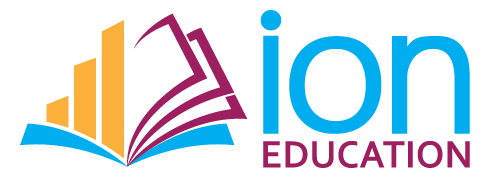Reflecting on 10 Years of ion: Finding Our Way, One Student at a Time
Ten years ago, I wouldn’t have guessed that we’d be where we are today with ion. In some ways, ion started long before the company existed—back in 2006 when I was a web developer for a suburban Milwaukee school district. I was part of a committee tasked with figuring out something new at the time: Response to Intervention (RtI). No Child Left Behind had just passed, and while the law said we needed to implement RtI, it didn’t exactly come with a user manual.
So, we got to work. We took a look at what our schools were already doing, created a plan, and built a basic dashboard to help identify students who needed interventions. Honestly? That dashboard was terrible. But it was a start.
Over time, that clunky tool evolved, and ion was born. But it wasn’t just my work at the district that shaped ion. Around the same time, our family grew through adoption. We welcomed our first daughter, who was in 4K. Her academic journey wasn’t easy—because of the trauma she’d experienced, we couldn’t even have a conversation about academics with her teachers until she was in third grade. By that point, she was significantly behind, and we started going through the RtI process ourselves.
It wasn’t just professional anymore. RtI came home with me, in a very real way. I realized how much our teachers needed easy access to student data to make better decisions. That became the heart of what ion would grow into—a platform that empowers educators to identify students, like my daughter, who might otherwise fall through the cracks. I know there are tens of thousands of kids out there like her, and I believe that if we can equip teachers with the right tools, we can change lives.
Fast forward to today, and ion has helped districts across the country do just that. I remember a meeting we had just a few months ago with one of our partner districts. They told us, “We had our first team meeting with ion yesterday. During the meeting, we identified three kids for intervention that we would have missed without ion.”
On the surface, that might not sound like a big deal. But to me, it’s everything. That’s three kids who are getting help they need, who might otherwise have been overlooked. And for every child we help find, it reminds me of my daughter. Giving her a shot in life could save her world—and I believe that’s true for every kid.
That’s why we do this. It’s why I take ion home with me every day. It’s not just about building a company, selling software, or meeting quotas. It’s about kids. It’s about making sure no one falls through the cracks.
We’ve learned a lot over the past decade. One of the biggest lessons is that our relationships with districts are just as important as the technology we provide. We’ve worked hard to build trust because we’re not just selling a system—we’re trying to help districts build a culture around data-driven decisions. That doesn’t happen overnight. We’re transparent with our customers about that. We don’t promise a quick fix in six weeks. We tell them to expect three years, because we’re not just installing software; we’re helping them make meaningful, long-lasting change.
And it’s paying off. As we’ve rolled out fully managed services—where we take the burden of managing data off the hands of our districts—we’ve seen a huge increase in engagement and satisfaction. By handling the technical side, our customers can focus on embedding ion into their schools and building a culture around it. We’re not just giving them tools; we’re walking with them through the transition.
Looking ahead, we’re excited to keep pushing boundaries. At our upcoming November conference, we’ll be introducing ion Labs, our experimental platform. We’re exploring some exciting projects—AI, assessments, and more—that we believe will make the user experience even better and continue to streamline access to data and insights. We’ve always been about helping schools make better decisions, and ion Labs is the next step in that journey.
Ten years is a milestone, but we’re just getting started. There are 52 million K-12 students across the country, and I’m proud to know that today there are three fewer kids falling through the cracks because of ion. That may seem small, but if we can do that with one district, imagine what we can do as we grow.
Thank you to everyone who has been part of this journey—our team, our partner districts, and especially the educators who work every day to make a difference in the lives of their students. We’re in this together, and I’m excited for what’s to come.
Here’s to the next 10 years—and to making sure no kid is left behind.
